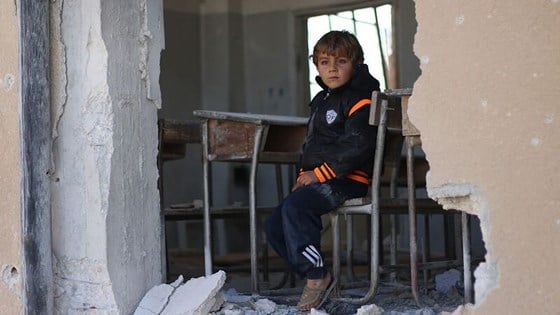Safe schools for children in conflict areas
Article | Last updated: 21/11/2019 | Ministry of Foreign Affairs
Currently, 27 million children in conflict areas are not in school, according to Unicef. Norway gives high priority to the protection of children’s education in conflict areas.
The Universal Declaration of Human Rights states that everyone has the right to education. By adopting the UN Sustainable Development Goals, the UN member states have undertaken to work to ensure that all children and young people receive a quality education.

Under international humanitarian law, schools are to be considered civilian objects, and they are not to be attacked in situations of armed conflict. Teachers and pupils are particularly vulnerable if school buildings are used for military purposes by parties to a conflict.
Despite the principles of international law , there are a great many attacks on pupils, teachers and schools all over the world. According to the 2018 report ‘Education under Attack’, attacks of this kind have taken place in at least 70 countries in recent years. The countries where attacks on schools are most widespread include DR Congo, Israel/Palestine, Nigeria, Yemen, Afghanistan, South Sudan, Syria and Ukraine.
In May 2015, Norway hosted the Oslo Conference on Safe Schools, an international conference on the protection of children and education during armed conflict. Norway led the work to develop a declaration on the protection of education in areas of armed conflict, together with Argentina, several other countries and a number of civil society organisations.
The aim of the Safe Schools Declaration is to prevent attacks on educational facilities. Countries that endorse the declaration make a commitment to use the Guidelines for protecting schools and universities from military use during armed conflict. More generally, the declaration aims to raise awareness of the fact that armed conflicts today are preventing millions of children from having access to safe schools.
As of November 2019, 100 countries have endorsed the Safe Schools Declaration. Among them are several of the countries where attacks on educational institutions are most widespread. The Government will continue its efforts to gain support for the Safe Schools Declaration and to follow up the countries that have endorsed it, with a view to ensuring that the Guidelines are implemented in practice.
Norway is cooperating closely with Argentina, which hosted the second Safe Schools Conference in March 2017.
The safe schools initiative is part of the Government’s efforts to promote education for development, which have made Norway a leading actor in the international work to ensure education for all. In 2019, the Government allocated approximately 3.7 billion for aid to education.